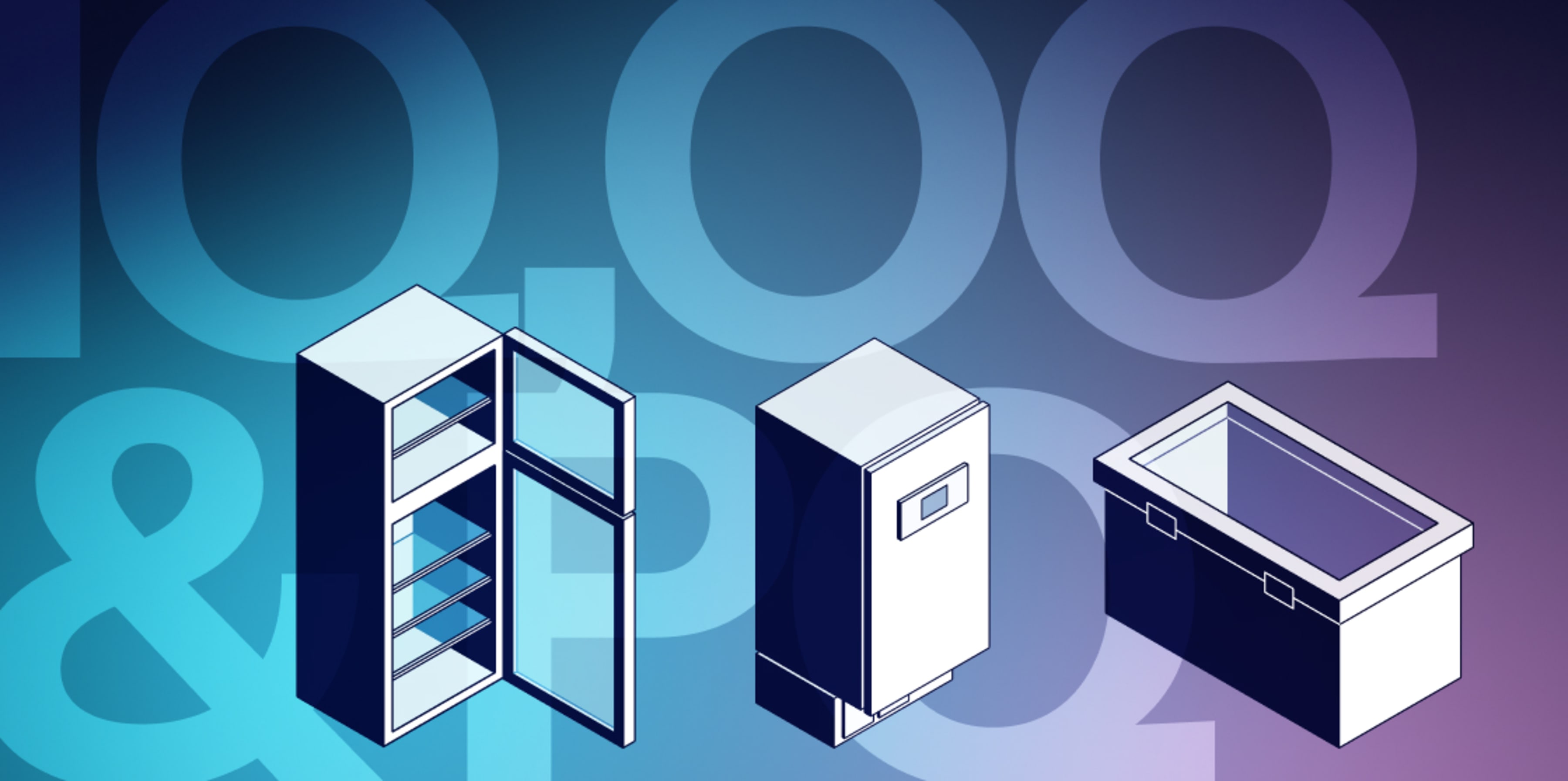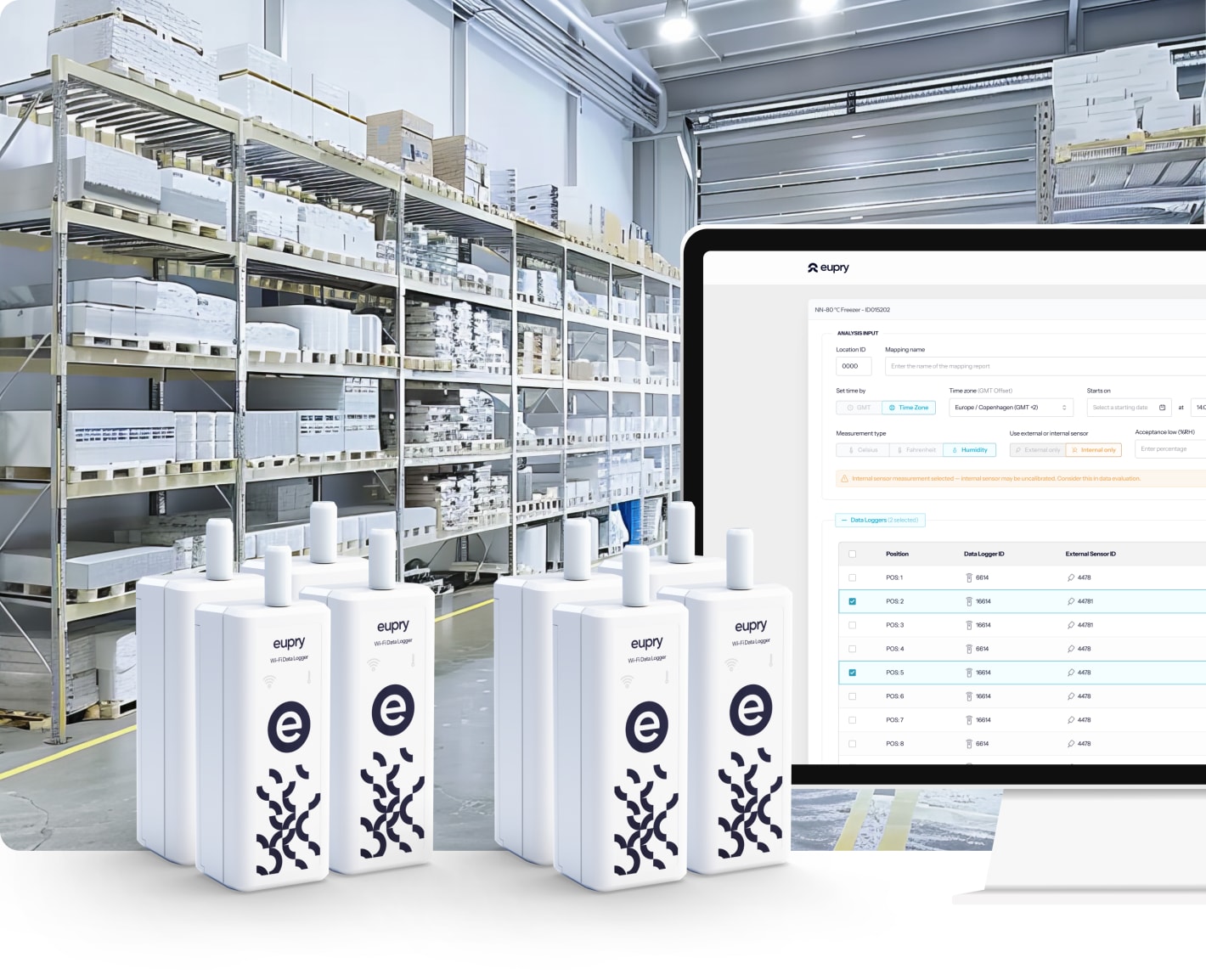IQ, OQ, PQ for refrigerators and freezers

Adam Hartmann-Kruckow
How to qualify TCUs in pharma
How to qualify refrigerators, freezers, and other temperature-controlled units (TCUs) with IQ, OQ, PQ? Get protocol templates, mapping guidance, and understand GMP/GDP best practices.
Get templates aligned with EU GMP Annex 15 expectations and FDA terminology to speed up planning, execution, and documentation.

Note:
This guide is provided for general educational purposes only and does not replace official regulatory requirements or professional judgment. Users are responsible for ensuring that IQ, OQ, and PQ activities are performed in accordance with applicable regulations, including EU GMP Annex 15, FDA 21 CFR Part 211, and other relevant GxP standards. Protocol templates offered here are examples and must be adapted, reviewed, and approved within your company’s quality management system before use.
Pharmaceutical refrigerators and freezers – often referred to as temperature-controlled units (TCUs) – are critical for safeguarding vaccines, biologics, and reagents. Auditors demand documented IQ, OQ, and PQ to prove compliance and protect the cold chain. This guide gives you a clear, step-by-step path to qualify TCUs efficiently, avoid common pitfalls, and stay audit-ready.
Also see: Temperature-controlled units in pharma: Qualification and monitoring guide
Why are IQ, OQ, and PQ required for TCUs in pharma?
Qualification demonstrates that refrigerators and freezers can consistently maintain defined storage conditions. Regulators expect documented proof that units meet the user requirement specification (URS), perform under stress, and deliver stable conditions in daily use. Without this, you risk product loss, regulatory findings, and failed audits.
- EU GMP Annex 15: Requires risk-based qualification, traceability, and documented evidence of control.
- WHO TRS 961: Defines expectations for temperature mapping and qualification of storage areas and equipment.
- GDP guidelines: Emphasize protection of the cold chain across transport, storage, and distribution.
Also read: [IQ, OQ, PQ in pharmaceuticals(/iq-oq-pq)
How do you plan IQ, OQ, and PQ for refrigerators and freezers?
Planning ensures smooth execution and fewer deviations. For TCUs, special attention must be given to alarm setpoints, recovery times, and temperature mapping.
- Define URS: Specify required ranges (e.g., +2 °C to +8 °C) and stability requirements.
- Perform risk assessment: Identify failure modes such as door seals, compressor failure, or temperature drift.
- Develop acceptance criteria: Make them specific and binary, for example, “Temperature uniformity ≤ 2 °C across mapping grid.”
- Select monitoring strategy: Decide on continuous monitoring and mapping frequency.
- Align with SOPs: Ensure loading patterns, alarm response, and maintenance are covered.
Also read: How to write a URS for pharmaceutical storage areas and TCUs

Download your free IQ/OQ/PQ protocol pack
Get instant access to an all-in-one protocol pack: From URS checklists to IQ, OQ, and PQ protocol templates. All you need to plan the qualification of temperature-controlled equipment and environments in pharmaceuticals, biotech, and logistics, aligned with WHO, FDA, GMP/GDP/GxP guidelines.
How do you perform installation qualification (IQ) for TCUs?
IQ verifies that the refrigerator or freezer is delivered and installed correctly. Evidence includes documentation, calibration certificates, and configuration records.
- Equipment identification: Record model, serial number, firmware/software, and accessories.
- Installation verification: Confirm correct electrical supply, grounding, clearance, and ventilation.
- Calibration certificates: Verify all temperature probes are calibrated by an ISO/IEC 17025 accredited lab.
- Configuration: Record alarm setpoints, notification pathways, and user roles.
- Documentation: Manuals, drawings, and certificates must be available and controlled.
Acceptance criteria: All checks must align with purchase specs, URS, and safety standards.
How do you perform operational qualification (OQ) for TCUs?
OQ challenges the TCU to prove controls and alarms respond correctly under test conditions. This is where most deviations occur if planning is weak.
- Functional checks: Verify display accuracy, user controls, and safety features.
- Alarm testing: Simulate high and low temperature excursions; confirm alarms activate within defined thresholds and notification systems work.
- Door opening recovery: Measure recovery time after door openings; confirm stability within URS.
- Mapping under stress: Conduct temperature mapping with empty or defined test loads to identify uniformity and control response.
- Power failure simulation: Confirm safe restart and data continuity after simulated outages.
Acceptance criteria: OQ passes if alarms respond correctly, recovery times are within limits, and mapping shows uniformity and stability.
How do you perform performance qualification (PQ) for TCUs?
PQ verifies performance under real-world use with representative loads and operating conditions. This step connects qualification to daily compliance.
- Representative loading: Map with realistic product or simulants in typical configurations.
- Operational mapping: Run mapping studies under steady-state operation with standard loading.
- Alarm response in routine use: Verify response and escalation procedures function as written in SOPs.
- Process capability: Document excursion management and corrective actions during routine monitoring.
Acceptance criteria: PQ passes if the TCU maintains defined temperature ranges and alarms function consistently in daily use.
Also read: IQ, OQ, PQ for cold storage rooms
What documentation do auditors check during TCU qualification?
Auditors expect traceability from URS to executed protocols and reports. Missing documentation is a common finding.
- Traceability matrix: Maps URS to risk assessment, protocols, and results.
- Calibration records: Certificates for probes and references.
- Mapping reports: Evidence of grid design, probe placement, and data integrity.
- Deviations and CAPA: Document root cause analysis and corrective actions.
- Change control: Records of repairs, relocation, or software updates.
Also read: WHO temperature mapping guidelines
How do you reduce requalification workload for TCUs?
Requalification can consume time if repeated mapping is required. Risk-based approaches and digital tools reduce the effort.
- Continuous mapping: Use monitoring sensors aligned with mapping IDs to collect ongoing evidence.
- Risk-based triggers: Re-qualify after major repairs, relocation, or negative trend analysis.
- Standardized protocols: Reuse templates across sites for faster execution.
- Centralized data: Store calibration certificates, deviations, and mapping data in one system for rapid audits.
Download free IQ/OQ/PQ protocol template pack
Get a step-by-step set of protocol templates and checklists to plan and document IQ, OQ, and PQ for TCUs and other temperature-controlled equipment, aligned with common auditor expectations in GMP and GDP.

FAQ: IQ, OQ, PQ for refrigerators, freezers, and other TCUs
IQ, OQ, and PQ services for GMP/GDP
One-stop for your entire validation process
(and all other thermal compliance needs) Get your incubator - and any other TCU or facility - qualification done faster with Eupry’s services built for GMP and GDP.
- One provider for the full validation
- Cost- and time-optimized processes
- Full GxP compliance confidence
Also read: Our continuous mapping solution

Learn more
- Also read: IQ, OQ, PQ in pharmaceuticals: complete guide to equipment qualification and compliance
- Also read: IQ, OQ, PQ for cold storage rooms
- Also read: IQ, OQ, PQ for warehouses
- Also read: IQ, OQ, PQ for incubators
- Also read: GxP temperature mapping guidelines